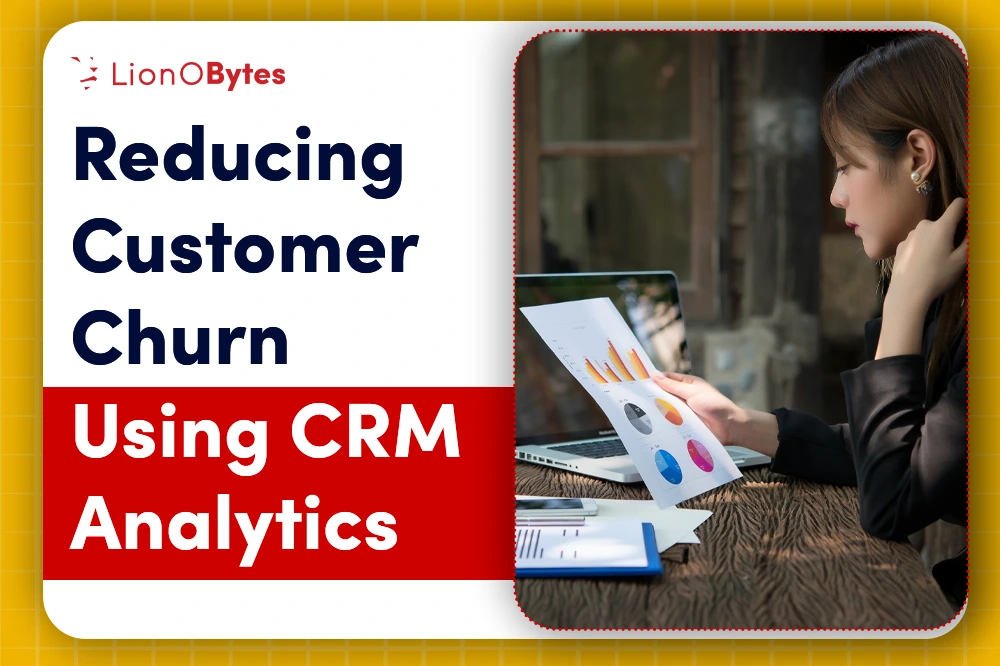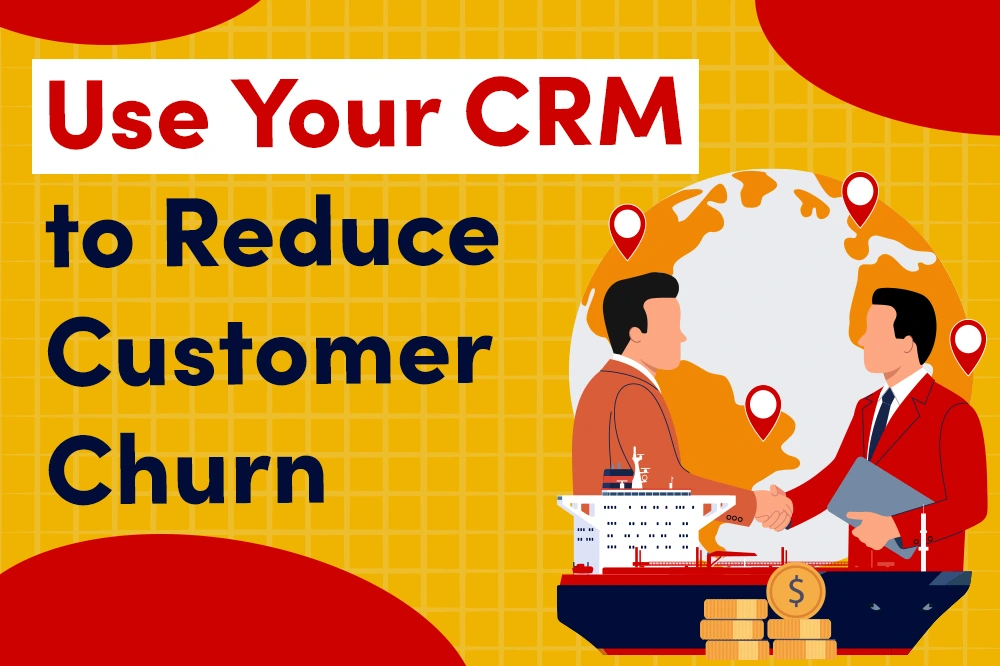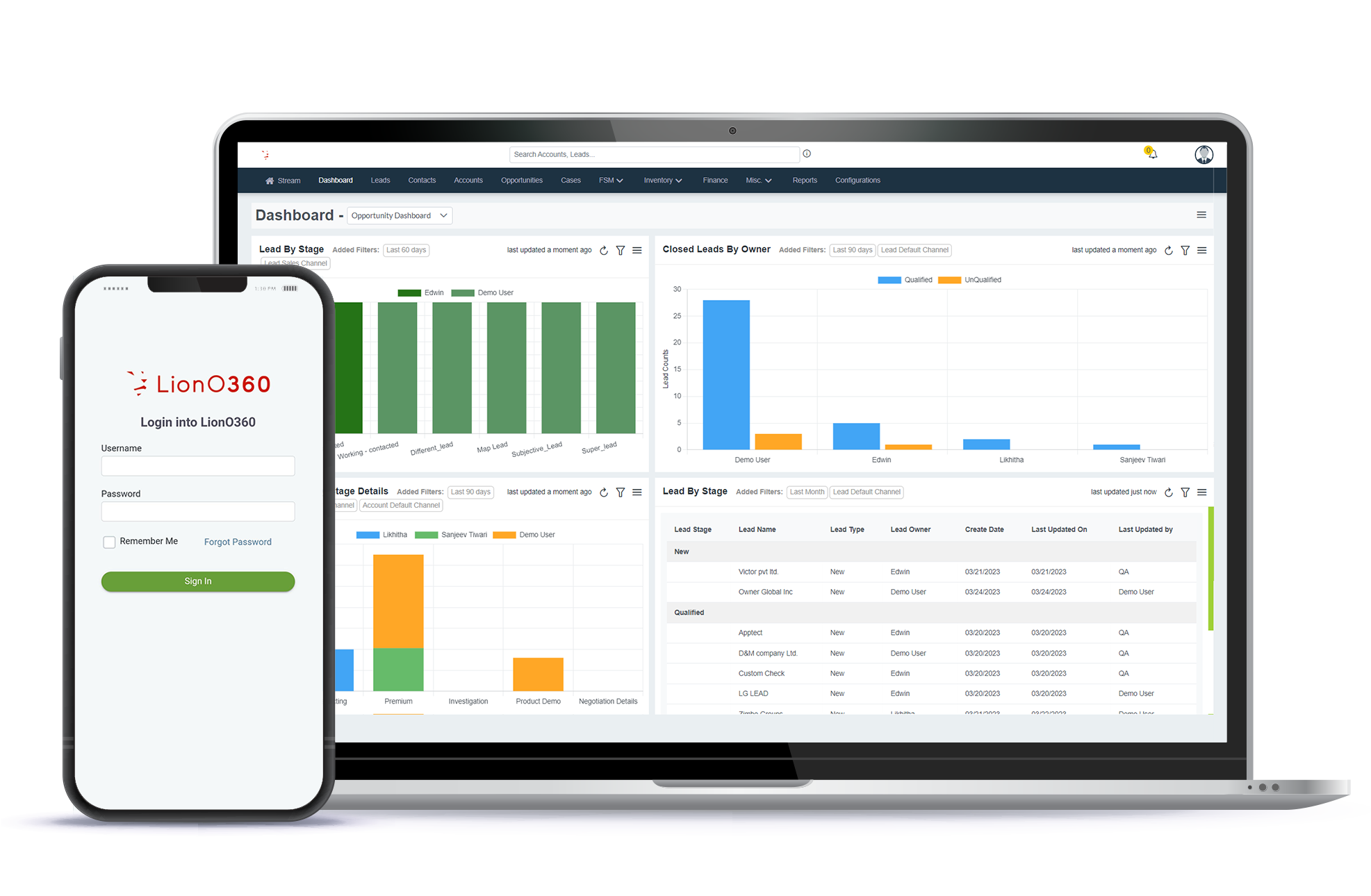
Customer retention has become a deciding factor for long-term business growth. While acquiring new customers often takes center stage, research shows that keeping existing customers is far more cost-effective. Businesses are grappling with the reality of customer churn, which refers to the percentage of customers who stop doing business with a company over time. High churn rates not only reduce revenue but also negatively affect brand reputation and customer trust.
One of the most effective ways to manage churn is by using a Customer Relationship Management (CRM) system. A CRM not only records interactions but also creates actionable insights to improve customer experience, anticipate needs, and strengthen loyalty. When used strategically, it can transform churn management into a systematic process that builds stronger, long-lasting relationships with customers.
In this content, we will explore the practical ways you can use your CRM analytics to reduce churn, how it impacts overall business health, and why LionO360 CRM stands out as a valuable tool for this purpose.
How CRM Analytics Reduces Customer Churn

1. Tracking Customer Behavior and Engagement
A CRM provides a centralized platform where every interaction with a customer is recorded. From purchase history to service tickets, emails, and feedback, the system creates a detailed picture of how customers engage with your brand. By studying these data patterns, businesses can identify signals of dissatisfaction, such as reduced purchase frequency, increased complaints, or delayed responses to communication.
- Effect on churn: When you track engagement effectively, you can take proactive steps before a customer decides to leave. For example, suppose a client who usually places monthly orders suddenly pauses for two cycles. In that case, your sales team can step in with a personalized offer or a call to understand the situation. This timely action prevents silent drop-offs.
2. Segmenting Customers for Personalized Communication
Not all customers leave for the same reasons. Some churn because they feel neglected, while others may leave due to a lack of value or competing offers. With this segmentation, you can create personalized communication strategies that make each customer feel valued.
- Effect on churn: Personalization in the customer relationship management analytics ensures that customers do not feel like just another number in your database. Instead, they receive relevant offers, loyalty rewards, and tailored support. This emotional connection reduces the chance of customers switching to competitors.
3. Automating Customer Follow-Ups
One primary reason for churn is a lack of consistent communication. Customers often drift away when they feel forgotten after the first purchase. A CRM system allows you to set up automated follow-up reminders and campaigns that nurture the customer relationship over time.
- Effect on churn: Automated yet thoughtful communication like thank-you messages, renewal reminders, or check-ins builds customer confidence. This makes customers feel cared for without overwhelming your team with manual tasks.
4. Monitoring Customer Feedback and Satisfaction
A CRM can integrate surveys and feedback forms directly into its system. This allows businesses to monitor customer satisfaction at different stages of the journey. More importantly, the CRM can flag negative feedback, helping managers act quickly to resolve issues before they escalate.
- Effect on churn: Customers who feel their complaints are acknowledged and resolved quickly are far less likely to leave. Addressing dissatisfaction at the right moment is a direct way of turning at-risk customers into loyal advocates.
5. Identifying At-Risk Customers with Predictive Analytics
Modern CRMs are powered with AI-driven analytics that can predict potential churn based on usage patterns and past data. For example, if a subscription-based customer has not logged in for a long time, the system can automatically mark them as “at risk.” Sales and support teams can then reach out to re-engage.
- Effect on churn: Early identification allows businesses to rescue relationships before they break.
6. Strengthening Customer Support through Centralized Data
One of the leading causes of churn is poor customer support. With a CRM, your support team has access to the complete history of each customer. Instead of repeating their problems to multiple agents, customers feel understood and valued.
- Effect on churn: Faster and more personalized support reduces frustration. A satisfied customer is not only more likely to stay but also more likely to recommend your brand.
7. Rewarding Loyalty with CRM-Driven Programs
A CRM allows you to design loyalty programs that reward repeat purchases or engagement. It can automatically track milestones such as the customer’s anniversary with the brand, number of purchases, or referrals. Rewarding these milestones builds a sense of recognition and appreciation.
- Effect on churn: Customers who feel rewarded for their loyalty have fewer reasons to leave. Loyalty programs also create emotional switching costs, meaning customers are less inclined to explore competitors when they are gaining rewards with you.
8. Streamlining Onboarding for New Customers
The initial days after purchase are critical. A CRM ensures that onboarding is smooth by providing reminders for welcome calls, tutorials, or check-in emails. It can also guide new users through the product or service step by step.
- Effect on churn: When customers are onboarded successfully, they feel confident and satisfied. Poor onboarding often leads to early churn, which is preventable with the help of CRM-driven guidance.
9. Creating Data-Driven Strategies for Long-Term Retention
CRM systems collect and analyze large amounts of customer data, which can be used to build retention-focused strategies. Businesses can identify the products that lead to higher loyalty, understand reasons behind churn in specific segments, and refine their offerings accordingly.
- Effect on churn: Data-driven decision-making removes guesswork. Instead of reacting to churn, businesses can proactively create experiences that retain customers for years.
Benefits of Using LionO360 CRM to Reduce Customer Churn

LionO360 Cloud CRM is one of the popular CRM systems that is designed with customer retention in mind. Unlike many other systems that store contact details, LionO360 goes deeper by offering intelligent insights, mobile accessibility, and field service management features.
- Holistic Customer View: LionO360 provides a 360-degree view of every customer. This means you not only track sales but also service requests, inventory management, and field operations in one place. Having this unified data makes it easier to spot early signs of churn.
- AI-Driven Insights: The CRM uses predictive analytics to identify at-risk customers. Sales teams can use these insights to take proactive measures, such as personalized offers or dedicated support.
- Strong Automation Capabilities: With LionO360, businesses can automate repetitive tasks like follow-ups, reminders, and nurturing emails. This consistent engagement keeps customers connected without overburdening the workforce.
- Seamless Field Service Management: Many churn cases arise from service-related dissatisfaction. LionO360’s integrated field service tools ensure that technicians and service staff have real-time information, helping them resolve issues efficiently.
- Scalability for Growing Companies: Whether you are a small business or a growing enterprise, LionO360 adapts to your needs. Its customization options and scalability make it a reliable partner for reducing churn at every stage of growth.
By combining advanced features with a customer-first approach, LionO360 CRM empowers businesses not only to manage churn but also to convert potential losses into long-term loyalty. Schedule your free demo now!
Frequently Asked Questions
1. How does a CRM help reduce customer churn?
A CRM reduces churn by tracking customer interactions, predicting at-risk clients, enabling personalized communication, and ensuring timely support. It helps businesses act before a customer decides to leave.
2. Can small businesses use CRM tools to prevent churn?
Yes. Even small businesses benefit from CRM systems because they help maintain consistent engagement, identify loyal customers, and manage relationships effectively without overwhelming resources.
3. What role does automation in CRM play in customer retention?
Automation ensures that customers receive regular communication, such as follow-ups, reminders, or thank-you notes. This consistent contact builds trust and prevents customers from feeling neglected.
4. Why should businesses choose LionO360 CRM for reducing churn?
LionO360 CRM offers predictive analytics, automation, and integrated service management, all of which are vital for reducing churn.













